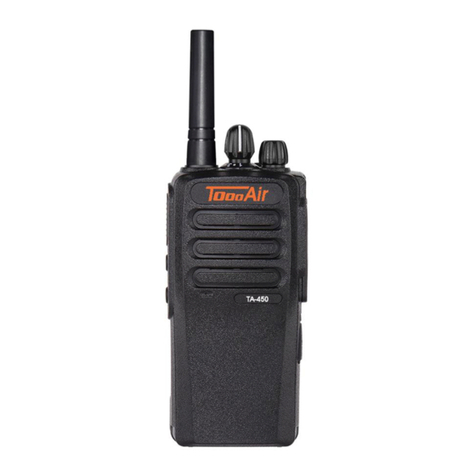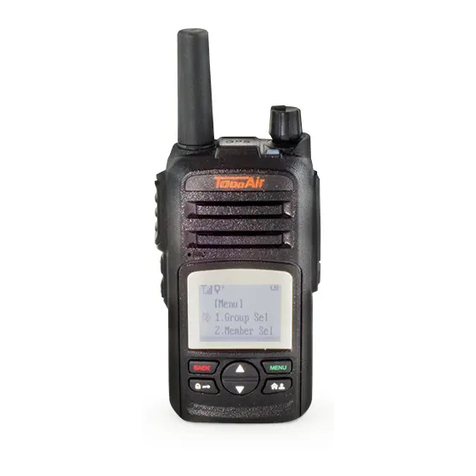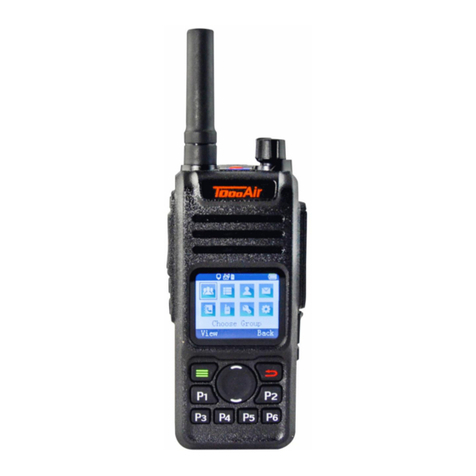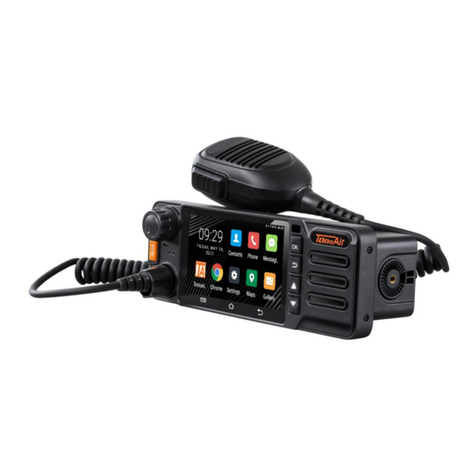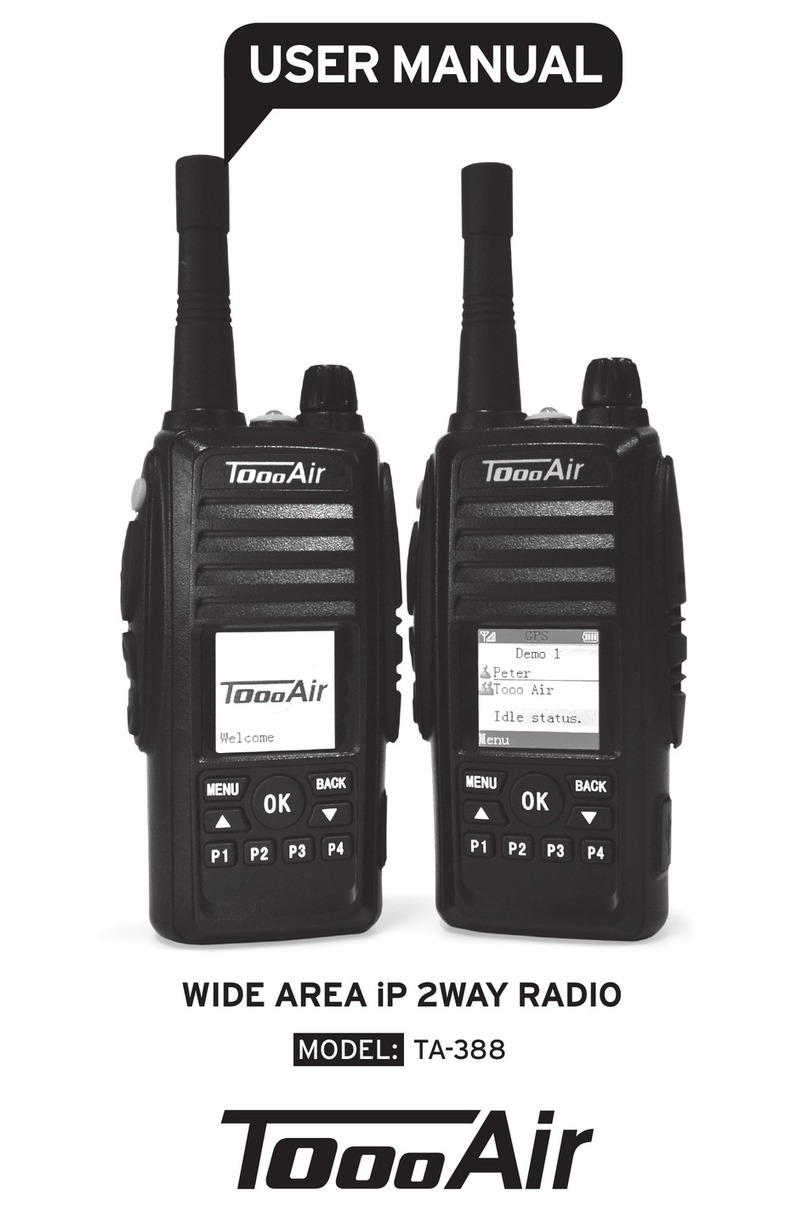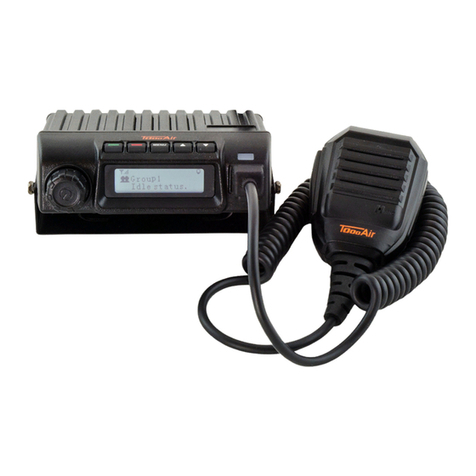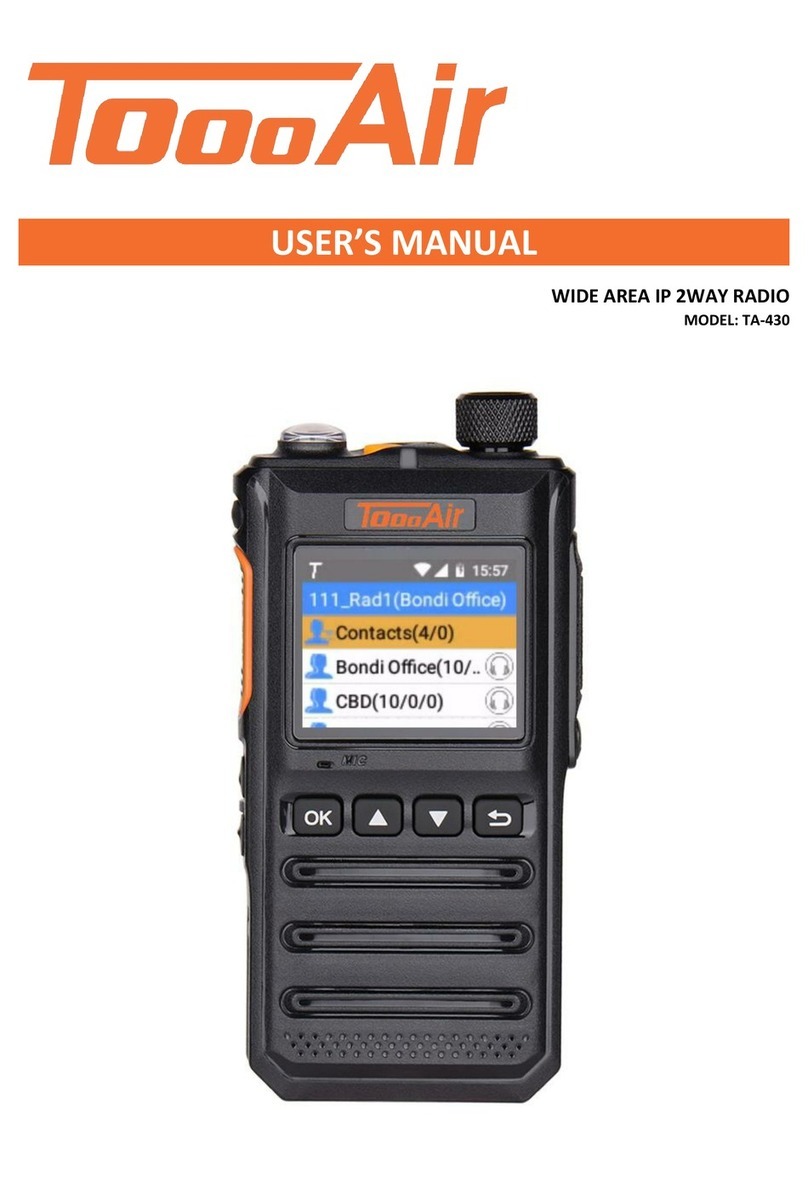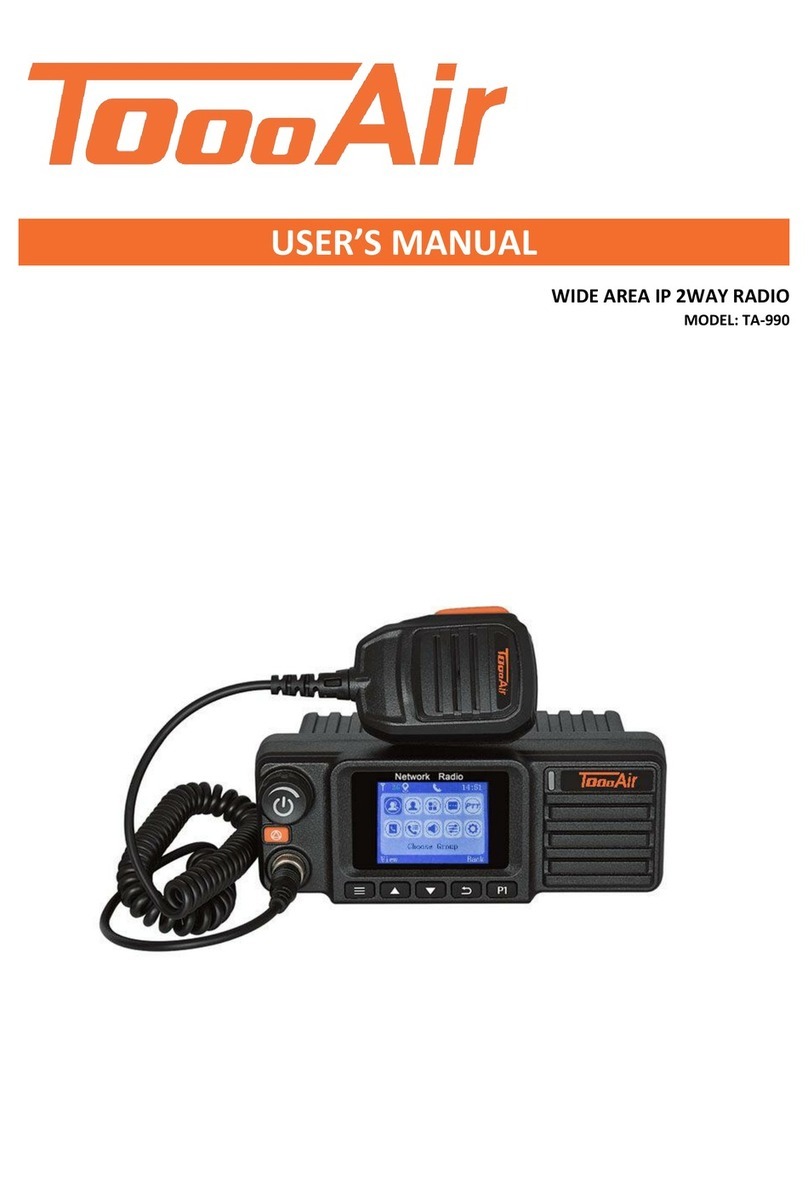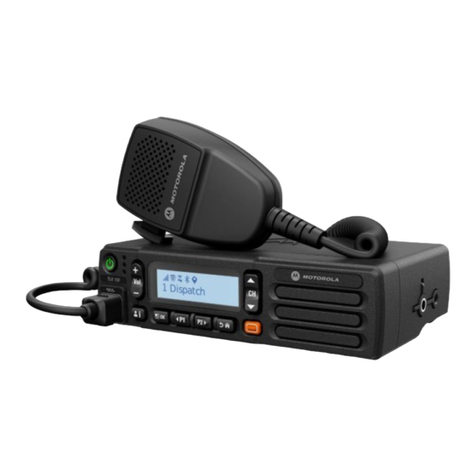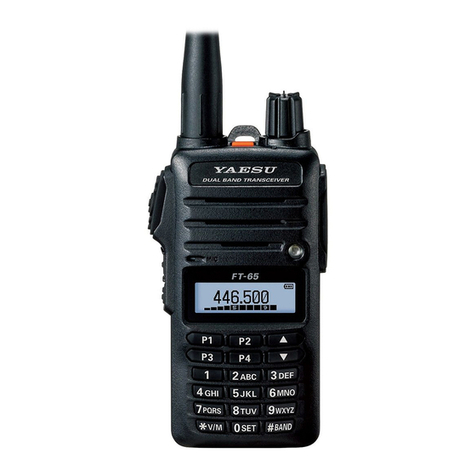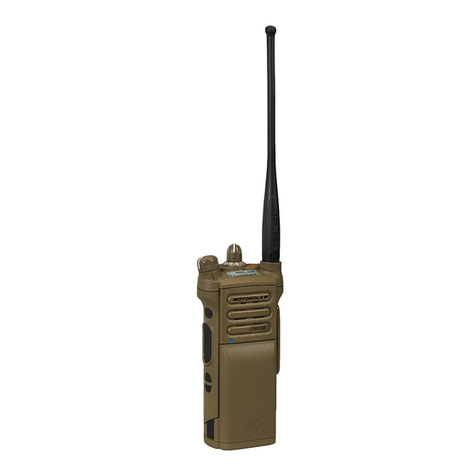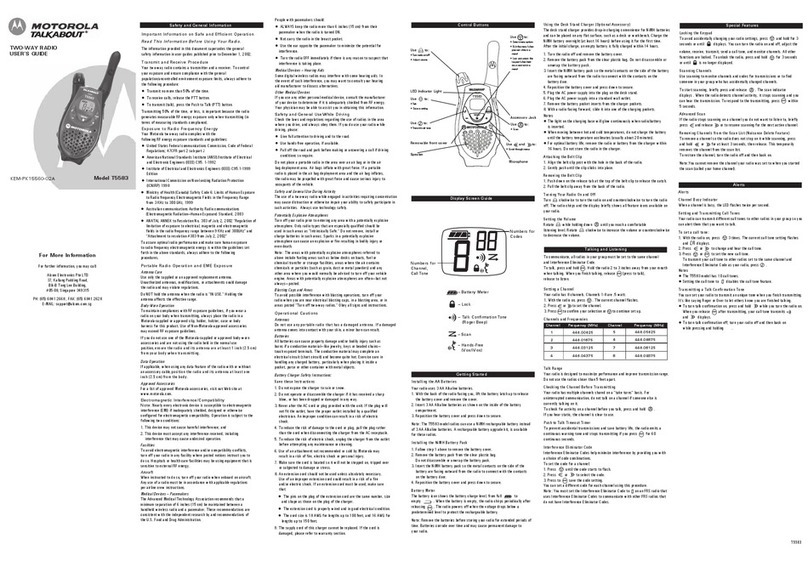SOS (Network feature only)
The radio can have the SOS feature
disabled/enabled. To access SOS settings.
1. Press ‘MENU’ key
2. Short press ⮝once, for “Settings”,
press ‘MENU’ key to select
3. Press ‘MENU’ key to select “SOS
Mode”
4. Short press ⮝or ⮟, to choose
desired setting press ‘MENU’ key to
save selection
5. Press ‘BACK’ key twice to return to
home screen or press ‘EXIT’ key
Time Zone
The time the radio displays can be adjusted to
suit your time zone. To access time zone
settings.
1. Press ‘MENU’ key
2. Short press ⮝once, for “Settings”,
press ‘MENU’ key to select
3. Short press ⮟once, for “Time
Zone”, press ‘MENU’ key to select
4. Short press ⮝or ⮟, to choose
desired setting press ‘MENU’ key to
save selection
5. Press ‘BACK’ key twice to return to
home screen or press ‘EXIT’ key
Note; Time is acquired from the GPS and
radio must first be used outside to establish a
GPS fix.
Keypad Lock
You can set automatic lock or manual lock, for
the keypad of the radio
1. Press the ‘MENU’ key
2. Short press ⮝, for “Setting”, press
‘MENU’ key to select
3. Short press ⮝three times, for
“Autolock” press ‘MENU’ key to
select
4. Short press ⮝or ⮟, to change the
option On/Off press ‘MENU’ key to
save selection
5. Press ‘BACK’ key twice to return to
home screen or press ‘EXIT’ key
When automatic lock is on, all keys other than
the PTT and Squelch/SOS key will automatically
lock after 10 seconds
Long press of the ‘Switch mode’ key on left side
of the radio will temporarily unlock keys.
Keypad beep setting
This function can be set in “Setting” menu.
It can be set to:
On: beep sound emitted when a key press is
operated
Off: No sound emitted with key press
MODE Selection
The radio has three different modes;
Dual mode
Analog only
IP only (Network)
To access mode selection.
1. Press ‘MENU’ key
2. Short press ⮟three times, for
“Advanced Settings”, press
‘MENU’ key to select
3. Press ‘MENU’ key to select “Working
Mode”
4. Short press ⮝or ⮟, to choose
desired setting press ‘MENU’ key to
save selection
5. Press ‘BACK’ key twice to return to
home screen or press ‘EXIT’ key
Note; while in certain modes some settings
may not be accessible.
RX. Priority
The radio can give priority to receiving a
broadcaster’s signal. The priority can be set to
Network, Analog, Dual or Sequential. In
sequential mode the radio will switch to the last
received transmissions.
1. Press ‘MENU’ key
2. Press ⮟three times, to choose
“Advanced Setting” press ‘MENU’
key to select
